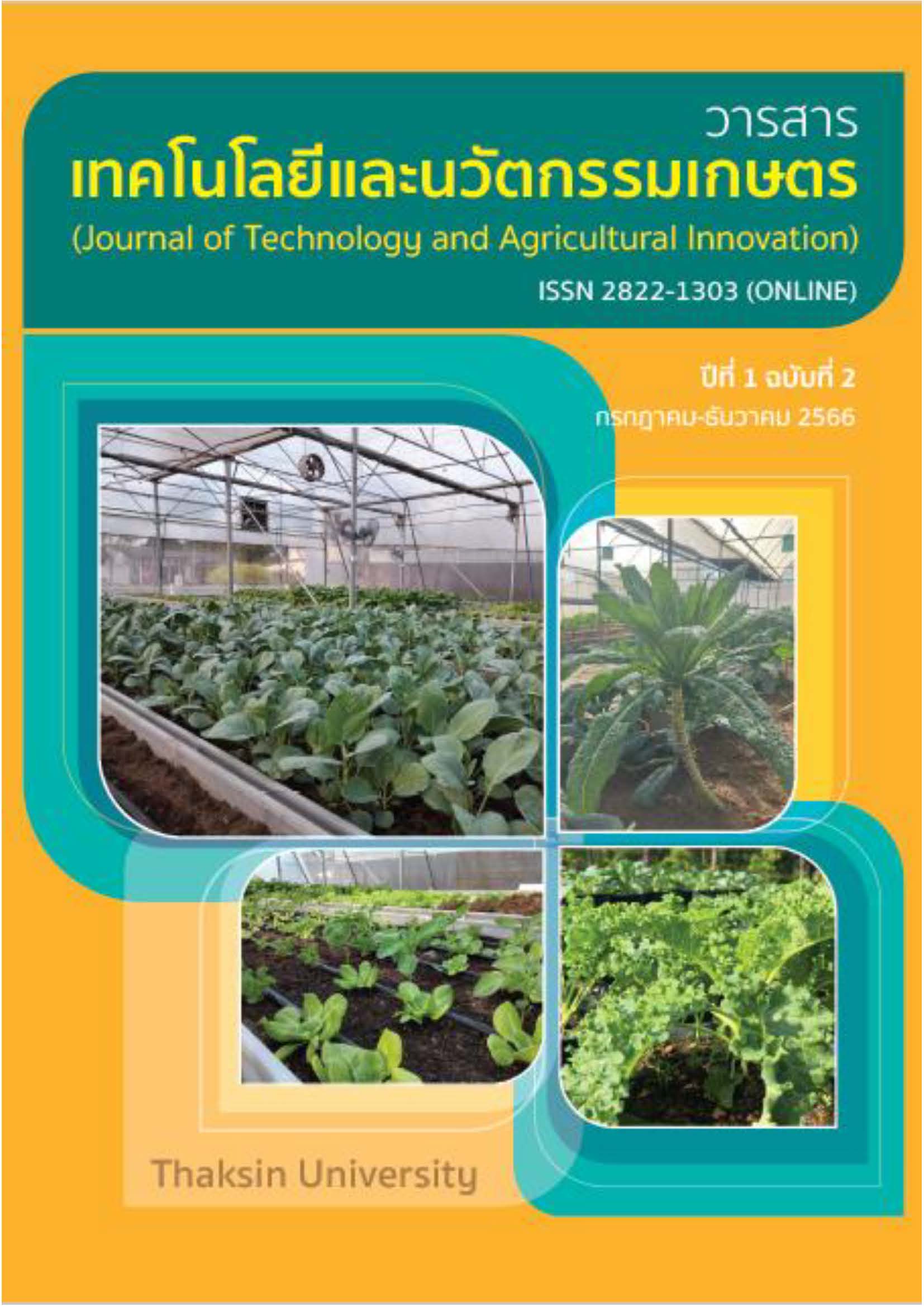Frequency of Fertilizer Application on Growth and Development of Curcuma Explants Derived from Tissue Culture
Keywords:
Plant propagation, nutrition, flowering, growth and developmentAbstract
Krajeaw (Curcuma) is one of the most economically important flower crops in Thailand. Propagation by using explants derived from tissue culture is an option for the grower. Therefore, this experiment aimed to study the optimum frequency of fertilizer application on growth and development of Curcuma derived from tissue culture. The Curcuma 2 cultivars i.e., Banrai Red and CMU Sweet Rosy plantlets derived from tissue culture were grown in plastic pot 6 inches, using sand: coconut dust: rice husk: rice husk charcoal at the ratio of 2: 2: 2: 1 as growing media. Plants were grown under 50% shading house and supplied with 21-21-21 water-soluble fertilizer at 20 grams per 20 liters of water, 100 ml per plant. The experimental designed was completely randomized design with 3 treatments, 10 replication per treatment i.e., 1) no fertilizer application (control treatment), 2) applying fertilizer once a week and 3) applying fertilizer twice a week. The results showed that, fertilizer application once or twice a week resulted in plant height average 35.8 cm in Krajeaw Banrai Red, 32.2 cm in Krajeaw CMU Sweet Rosy and leaves number average 6 leaves Krajeaw Banrai Red, 5.8 leaves in Krajeaw CMU Sweet Rosy which were higher than no fertilizer application treatment both 2 cultivars. The highest of flowering percentage in Krajeaw Banrai Red was observed when plants were supplied with fertilizer once a week, while the highest flowering percentage in Krajeaw CMU Sweet Rosy was obtained from fertilizer application twice a week treatment, about 67%.
References
นันทภพ จันต๊ะคาด. (2562). ผลของความถี่ในการให้ปุ๋ย ต่อการเจริญเติบโตของต้นกระเจียวที่ได้จากการเพาะเลี้ยงเนื้อเยื่อ. ปัญหาพิเศษระดับปริญญาตรี คณะเกษตรศาสตร์ มหาวิทลัยเชียงใหม่.
พิทยา สรวมศิริ. 2554. ธาตุอาหารในการผลิตพืชสวน. ภาควิชาพืชศาสตร์และทรัพยากรธรรมชาติ
คณะเกษตรศาสตร์ มหาวิทยาลัยเชียงใหม่. 314 น.
ศุภสุตา การูจี สุริวัฒน์ ช่วยบำรุง ศุภธิดา อับดุลลากาซิม และ สิรินาฏ น้อยพิทักษ์. (2561). ผลของความถี่ในการใส่ปุ๋ยต่อการเจริญเติบโต คุณภาพช่อดอก และปริมาณไนโตรเจนสะสมในกล้วยไม้สกุลหวายพันธุ์ โซเนีย ‘เอียสกุล’. วารสารวิทยาศาสตร์เกษตร 49, 257-261.
สมชาย สุคนธสิงห์ โอฬาร พิทักษ์ ภาวนา อัศวะประภา ทวิพงษ์ สุวรรณโน เศรษฐพงศ์ เลขะวัฒนะ และอภิชาติ สุวรรณ. (2541). การปลูกประทุมมาและกระเจียว. เอกสารคำแนะนำ กรมส่งเสริมการเกษตร. กรุงเทพฯ.
สุรวิช วรรณไกรโรจน์. (2537). ปทุมมาและกระเจียว. ไม้ตัดดอกเขตร้อน (พิมพ์ครั้งที่ 2). กลุ่มไม้ดอกไม้ประดับ กองส่งเสริมพืชสวน กรมส่งเสริมการเกษตร.
สุภาพร สัมโย และอำนวย อรรถลังรอง. (2563). สถานการณ์การผลิตปทุมมา (มิถุนายน 2563). สถาบันวิจัยพืชสวน กรมวิชาการเกษตร.
โสระยา ร่วมรังษี ชัยอาทิตย์ อิ่นคำ และพิมพ์ใจ สีหะนาม. (2560). โครงการปรับปรุงคุณภาพการผลิตปทุมมาและกระเจียวเพื่อการค้า. รายงานฉบับสมบูรณ์ สถาบันวิจัยและพัฒนาพื้นที่สูง (องค์การมหาชน).
Downloads
Published
How to Cite
Issue
Section
License
Copyright (c) 2023 Thaksin University

This work is licensed under a Creative Commons Attribution-NonCommercial-NoDerivatives 4.0 International License.



